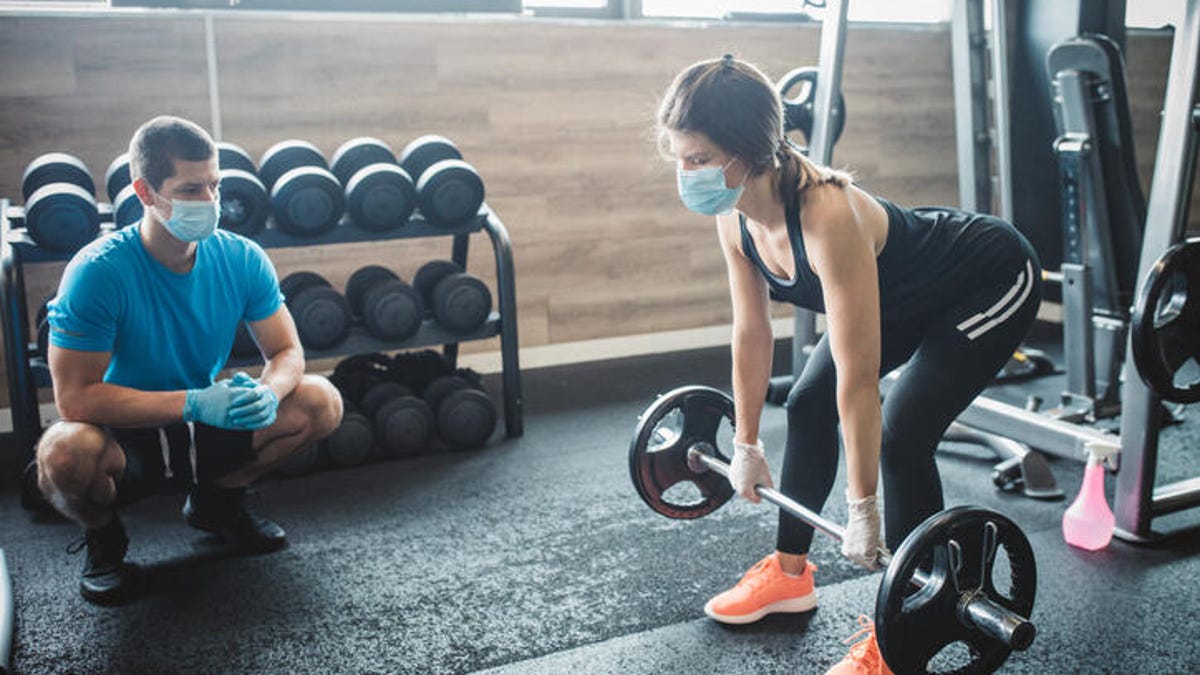Working out with a personal trainer: Is it safe right now?
An infectious disease expert explains the risks of working out with a trainer versus at a gym.

Find out how safe it is to work out with a personal trainer compared to exerising at a gym.
Exercising can sometimes feel like another dreaded chore, especially eight months or so into a pandemic. When your workout options are limited and motivation is dwindling, you may be itching to get back out to a gym and work out with a trainer in real life again. But is that even possible or safe right now?
Working out with a personal trainer in a private setting comes with a lot of perks like the personalized guidance, support, motivation and the energy boost you get from working out with others. But with the benefits also comes real risk during a pandemic, even if you take precautions like social distancing and wearing masks.
To weigh the pros and cons of working out with trainers in private sessions, I talked to Dr. Dean Winslow, an infectious disease physician at Stanford Health Care.
What's safer: Exercising with a trainer indoors or going to a gym?
When it comes to safety in a gym environment, some of the biggest risk factors are that you're indoors and in proximity to other people who are breathing heavily. "As a general rule, the indoor environment is, almost by definition, the most hazardous in terms of getting infected with COVID-19," Dr. Winslow says. So no matter what type of gym or studio you're working out in, the indoor environment will be riskier compared to working out outside.
"Indoors, you have relatively much less circulation of air," Dr. Winslow says. "And we do know now that these small particle aerosols, which are generated by talking or singing, or certainly breathing hard while exercising, can remain suspended in the air for up to three to four hours."
The key to minimizing risk if you do choose to work out inside is to reduce the number of people you're exercising with, while maintaining social distance and wearing a mask. For this reason, Dr. Winslow says doing a one-on-one session in a studio with just one other person is much safer than going to a gym full of people. "[Exercising] outdoors is much safer as a general rule. But I think if you absolutely need to go to the gym, the less risky option would be to do it just one-on-one with a trainer and with both people wearing masks," says Dr. Winslow.
Exercising with others outdoors is less risky than inside, according to Dr. Winslow.
You should always check with your gym or studio for safety regulations before you go and make sure they are taking the virus seriously. Some precautions to look for are mask mandates, temperature checks, extra cleanings, air filtration systems and a social-distancing policy. You should also be aware that safety in any situation is relative to what's happening in your community. Places where the virus is spreading at higher rates are inherently riskier than those where the virus rates are low.
No matter if you're working out at a gym or studio indoors, Dr. Winslow stresses the importance of wearing masks in addition to social distancing. "Even the social distancing, with the small particle aerosol transmission, is not that helpful. It's better than nothing but it's why it's still so important in the indoor environment for everyone to be wearing masks," Dr. Winslow says.
If someone is infected with the virus and does not know, face masks help reduce the chance that the person will infect others through the air. "We also now know that masks provide some degree of protection for the person wearing them," Dr. Winslow says.
Overall, Dr. Winslow advises working out with as few people around you as possible since the fewer people you're near (with or without masks), the lower your risk. "It's just kind of a matter of math that the fewer people that are in a room, the less chance statistically one person is going to be asymptomatic but infected and shedding the virus," Dr. Winslow says.

